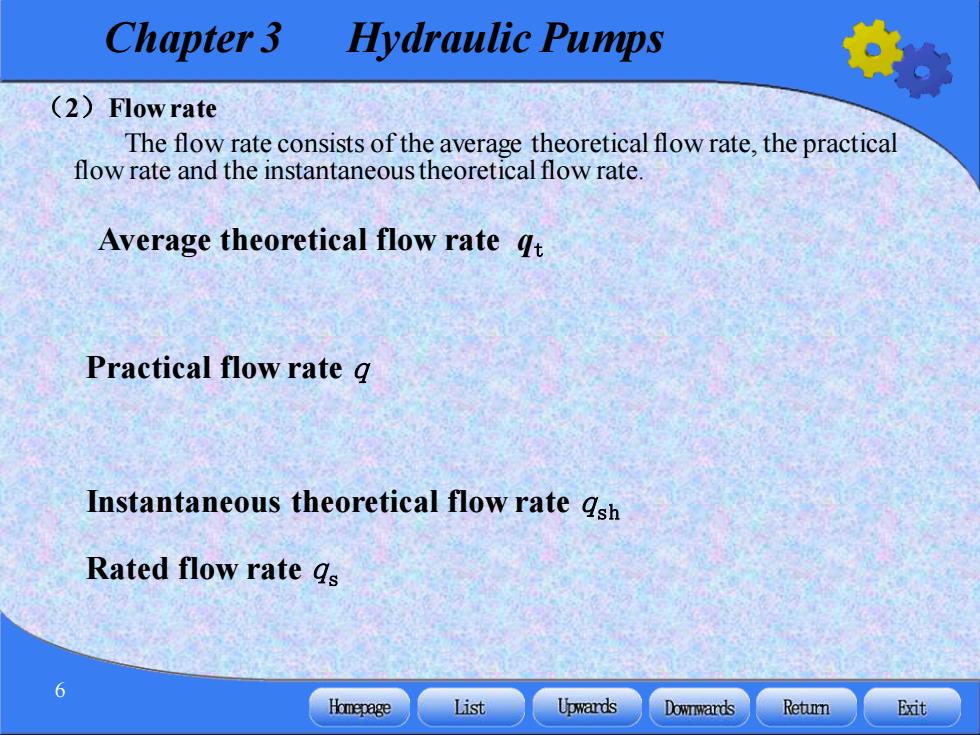
Chapter 3 Hydraulic Pumps (2)Flowrate The flow rate consists of the average theoretical flow rate,the practical flow rate and the instantaneous theoretical flow rate. Average theoretical flow rate qt Practical flow rate g Instantaneous theoretical flow rate ash Rated flow rate 9s Homepage List Upwards Downwards Retumn Exit
Chapter 3 Hydraulic Pumps 6 (2)Flow rate The flow rate consists of the average theoretical flow rate, the practical flow rate and the instantaneous theoretical flow rate. Average theoretical flow rate qt Practical flow rate q Instantaneous theoretical flow rate qsh Rated flow rate qs
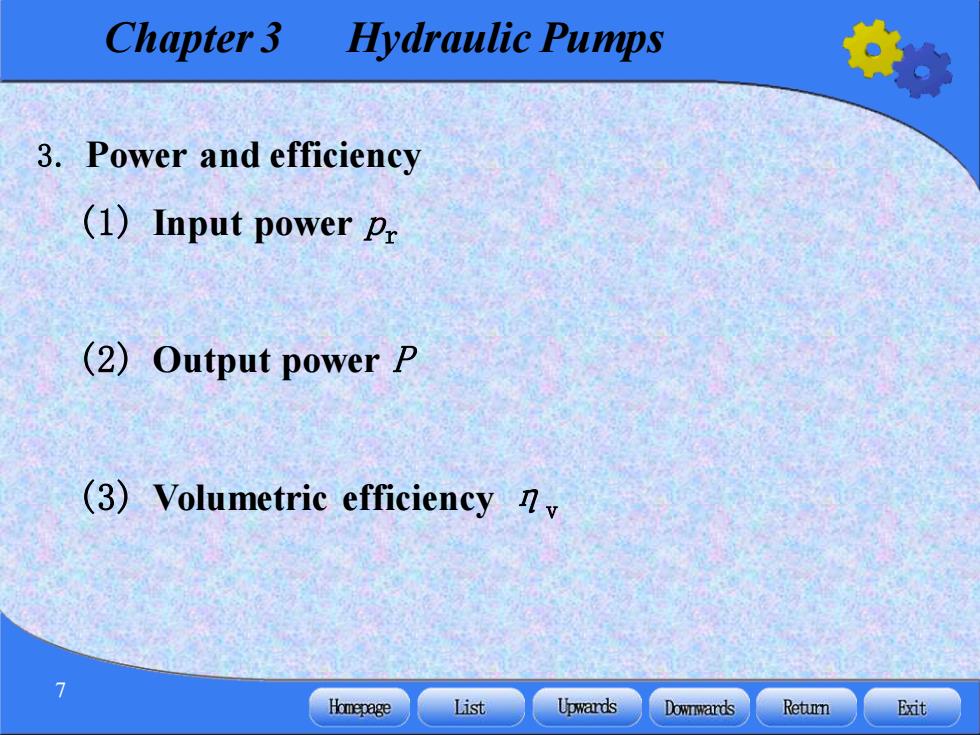
Chapter 3 Hydraulic Pumps 3. Power and efficiency (1)Input power pr (2)Output power P (3)Volumetric efficiencyv Homepage List Upwards Downwards Retumn Exit
Chapter 3 Hydraulic Pumps 7 3. Power and efficiency (1) Input power pr (2) Output power P (3) Volumetric efficiency ηv
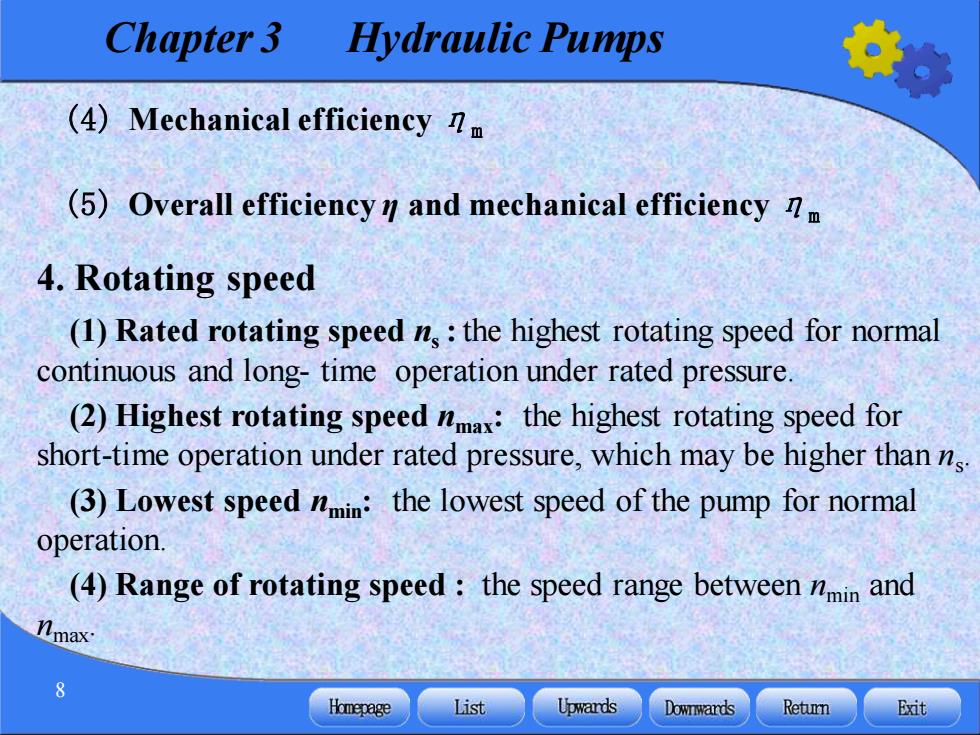
Chapter 3 Hydraulic Pumps (4)Mechanical efficiency 1m (5)Overall efficiency y and mechanical efficiency nm 4.Rotating speed (1)Rated rotating speed n:the highest rotating speed for normal continuous and long-time operation under rated pressure. (2)Highest rotating speed:the highest rotating speed for short-time operation under rated pressure,which may be higher than ns (3)Lowest speed nmin:the lowest speed of the pump for normal operation (4)Range of rotating speed:the speed range between nmin and nmax 8 Homepage List Upwards Downwards Retumn Exit
Chapter 3 Hydraulic Pumps 8 (4) Mechanical efficiencyηm (5) Overall efficiency η and mechanical efficiencyηm 4. Rotating speed (1) Rated rotating speed ns : the highest rotating speed for normal continuous and long- time operation under rated pressure. (2) Highest rotating speed nmax: the highest rotating speed for short-time operation under rated pressure, which may be higher than ns . (3) Lowest speed nmin: the lowest speed of the pump for normal operation. (4) Range of rotating speed : the speed range between nmin and nmax
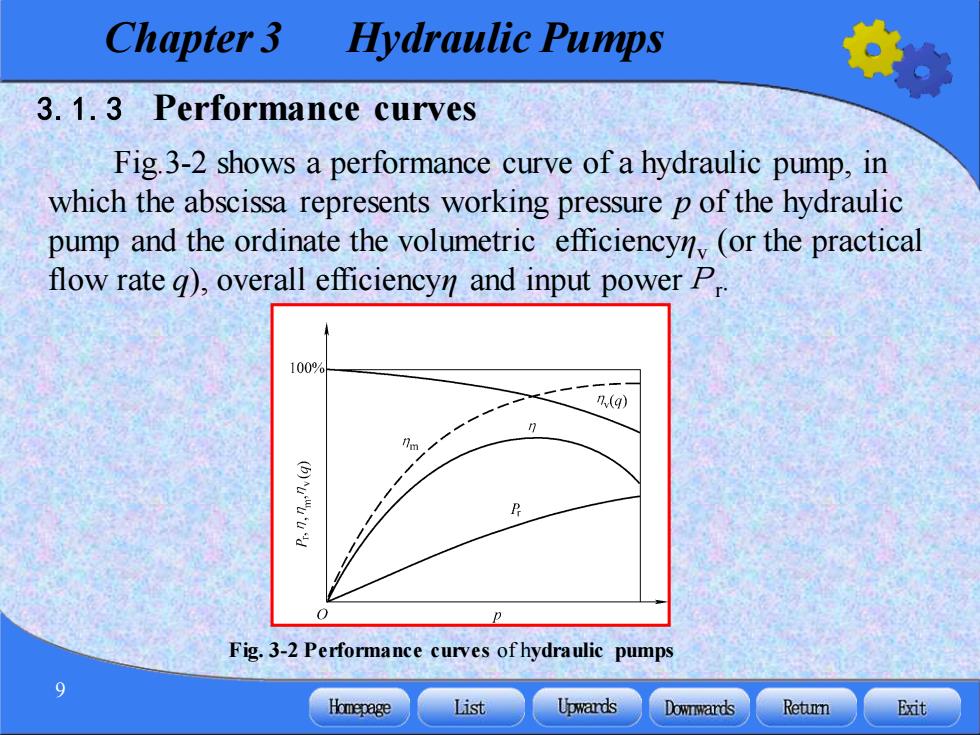
Chapter 3 Hydraulic Pumps 3.1.3 Performance curves Fig.3-2 shows a performance curve of a hydraulic pump,in which the abscissa represents working pressure p of the hydraulic pump and the ordinate the volumetric efficiencyn(or the practical flow rate g),overall efficiencyn and input power P 100% n(q) Fig.3-2 Performance curves of hydraulic pumps Homepage List Upwards Downwards Retumn Exit
Chapter 3 Hydraulic Pumps 9 3.1.3 Performance curves Fig.3-2 shows a performance curve of a hydraulic pump, in which the abscissa represents working pressure p of the hydraulic pump and the ordinate the volumetric efficiencyηv (or the practical flow rate q), overall efficiencyη and input powerPr . Fig. 3-2 Performance curves of hydraulic pumps
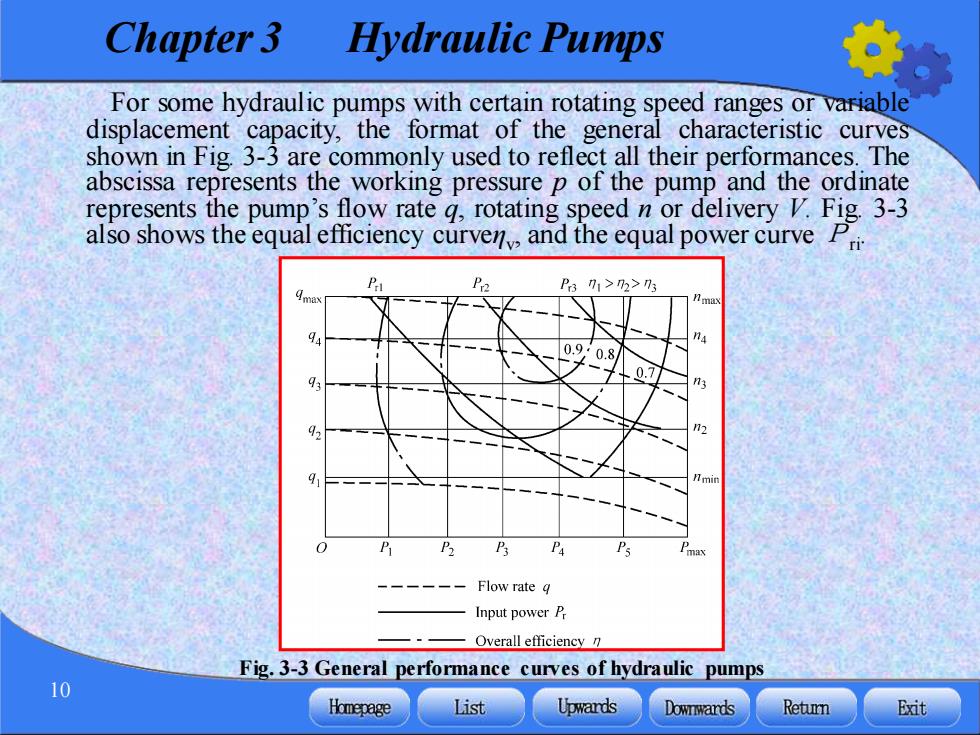
Chapter 3 Hydraulic Pumps For some hydraulic pumps with certain rotating speed ranges or variable displacement capacity,the format of the general characteristic curves shown in Fig 3-3 are commonly used to reflect all their performances.The abscissa represents the working pressure p of the pump and the ordinate represents the pump's flow rate g,rotating speed n or delivery V.Fig 3-3 also shows the equal efficiency curven and the equal power curve Pri P31>2>n3 92 Flow rate q Input power P Overall efficiency n Fig.3-3 General performance curves of hydraulic pumps 10 Homepage List Upwards Downwards Retumn Exit
Chapter 3 Hydraulic Pumps 10 For some hydraulic pumps with certain rotating speed ranges or variable displacement capacity, the format of the general characteristic curves shown in Fig. 3-3 are commonly used to reflect all their performances. The abscissa represents the working pressure p of the pump and the ordinate represents the pump’s flow rate q, rotating speed n or delivery V. Fig. 3-3 also shows the equal efficiency curveηv , and the equal power curve Pri. Fig. 3-3 General performance curves of hydraulic pumps